Hello everyone, this is Uri, Guerrilla Poker Instructor. I recently reviewed a session played by three of today's top players – Stefan, Munez and Nacho. Large sums changed hands, and at some point the boss, Linus, joined the players. I don't know if it's an old boss or a new one – maybe Stefan has already dethroned him, but maybe not. They played 4-max for some time, then Nacho left, not wanting to continue in such a line up. Well, let's look at some hands.
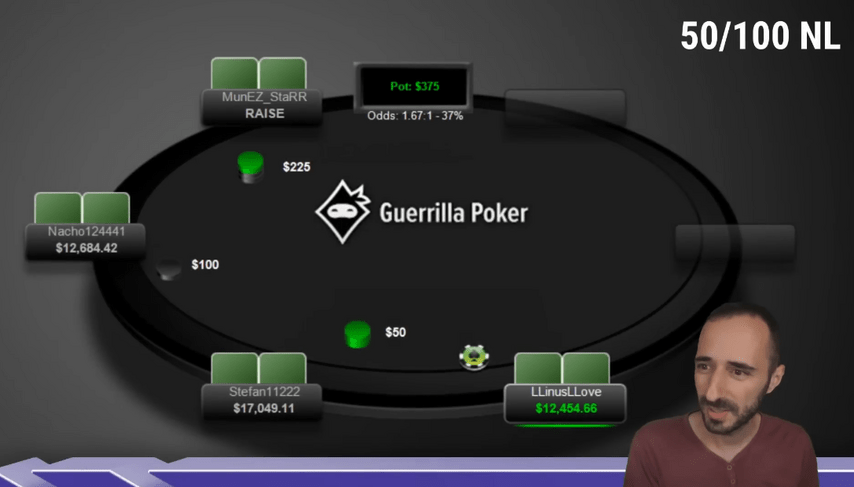
Munez raises 2.25bb from the CO. The boss on the button folds, only Nacho in the big blind calls.
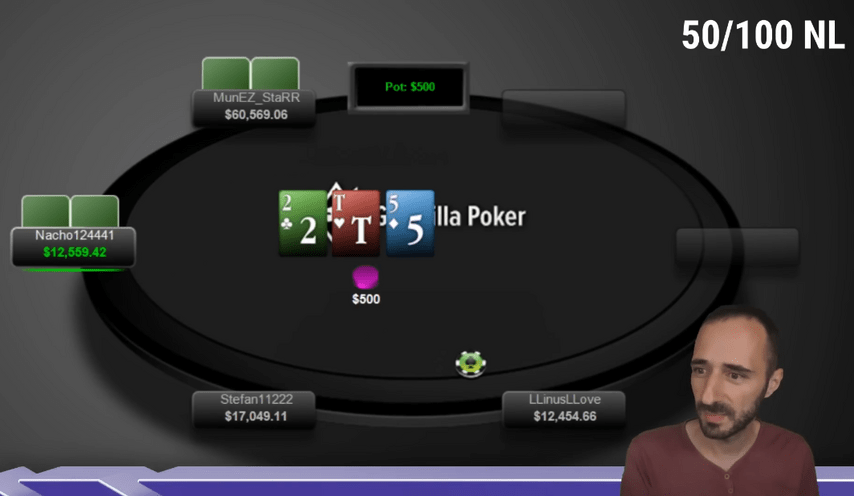
Pretty good board for Munez. Nacho checks, and Munez bets a third of the pot, $165, indicating that he c-bets this texture with all or almost all of his range. Nacho check-raised to $656. (If you don't know what hands he should check-raise, check out my tutorial on the subject.) Munez calls.
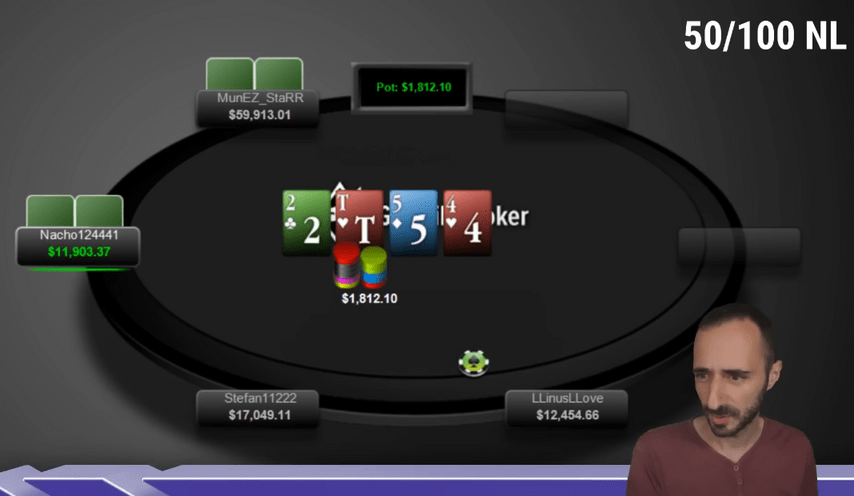
What does this card mean in relation to a check-raise range? Well, it completes some straights – and . Nacho's range should have some 63s and A3o. In the Munez range, there can only be , so the turn can be called asymmetric – suits one player more than another. And Nacho highlights this difference with his $2,713 overbet. Munez decides to call.
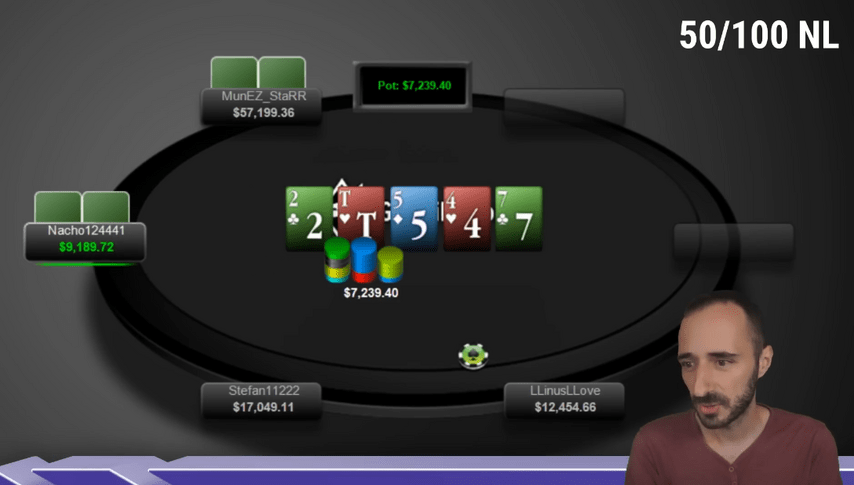
Nacho continues his story of having a set on the flop or a straight on the turn and pushes all-in for $9,189. Munez calls.
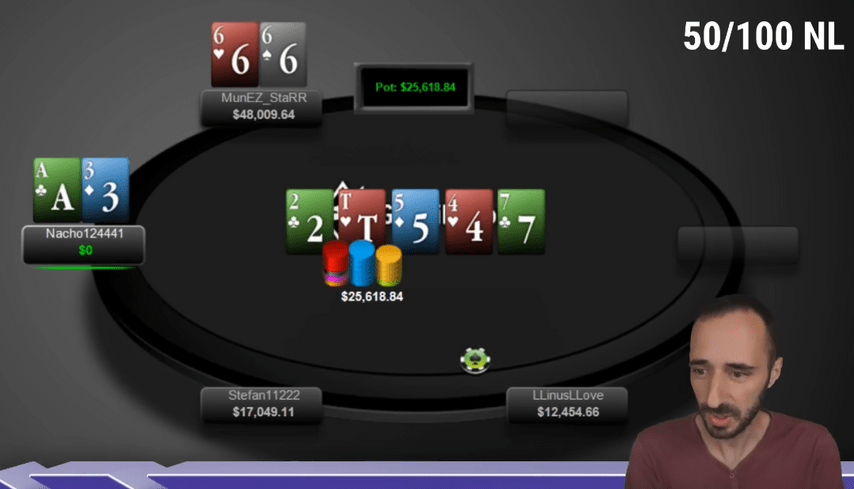
Nacho does indeed have one of the straights we've been talking about. In this situation, it can be called the absolute nuts, since there is no .
Munez shows pocket sixes. Well, he's blocking and beats all bluffs. blocks the backdoor that Nacho can check-raise the flop with. Sets, of course, won. I don't think it's a very winning bluff catcher, I wouldn't even call it mandatory. Calling is slightly loose in my opinion. However, he has a logical explanation, it just didn't work out this time.
Now we are watching a 5-bet pot in the blinds with Linus as a spectator.
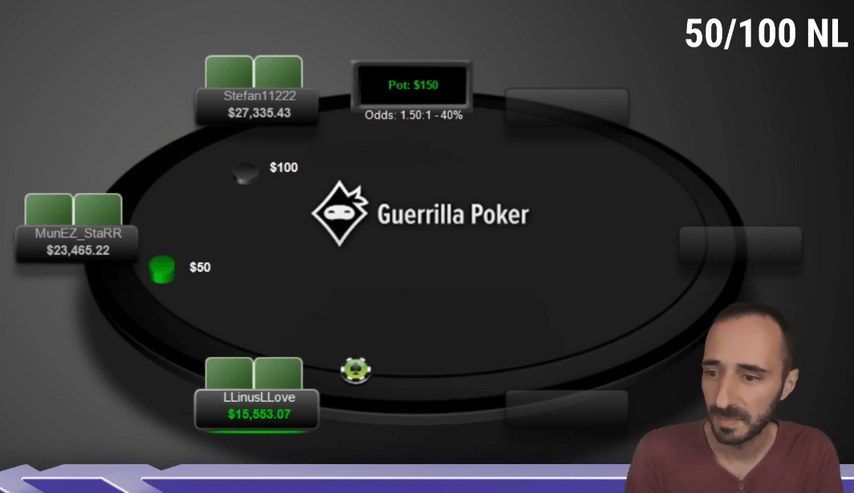
Munez raises to $300, Stefan raises to $900, Munez raises to $2,700, Stefan makes it $5,000 and is called.
Stefan's range is aces, kings, maybe queens, some and some bluffs. Munez should have a more or less linear range with jacks, queens, , and other hands that he deemed necessary to call due to pot odds. Of course, he can also have slowplays.
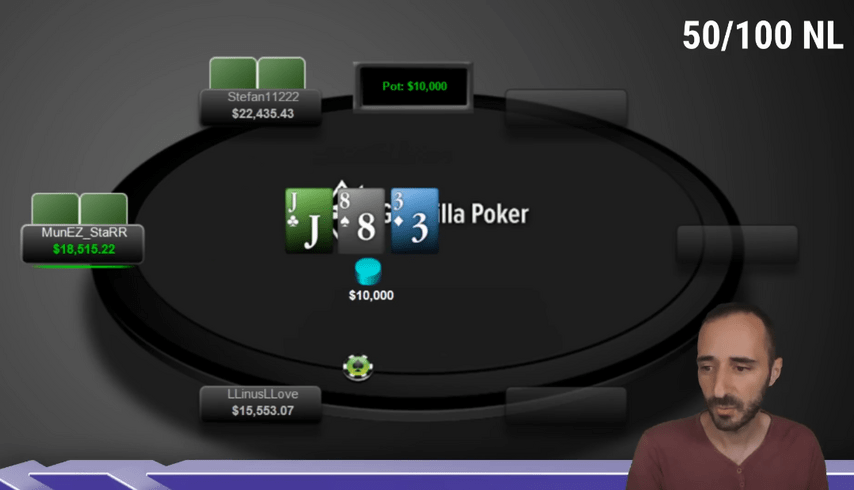
Given the extremely tight 5-betting ranges, this board is not much different from, for example, . Stefan's bluffs mostly miss.
Munez checks. Stefan bets a quarter of the pot, $2,500. Munez calls.
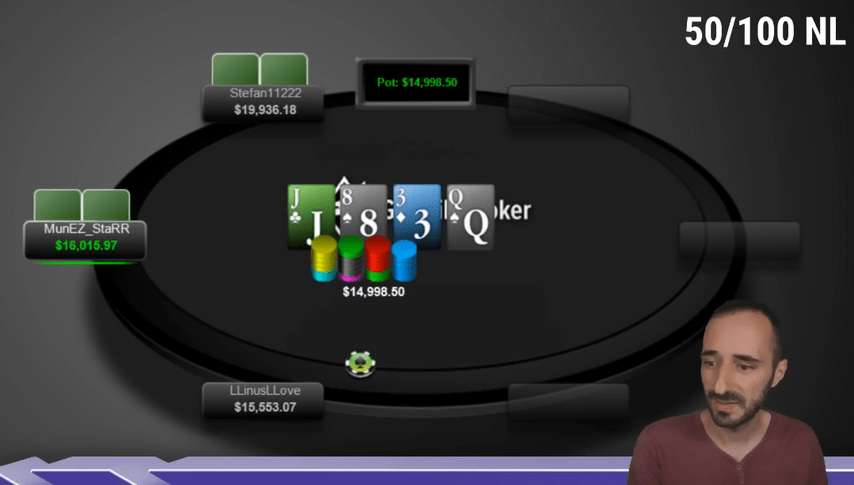
Munez checks again. Stefan continues with another small bet, $3,748. Munez makes another call.
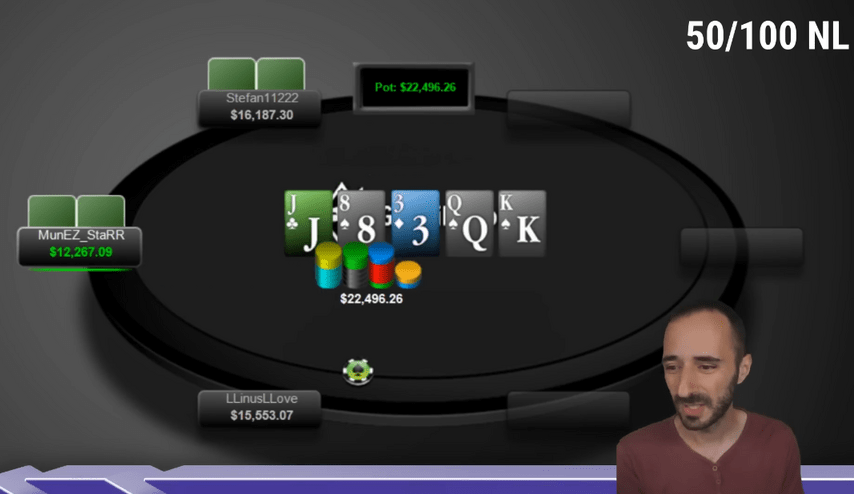
On the river, Munez decides to donk jam about half the pot. A call comes from Stefan.
Does donk jam make sense? As a general rule, we want to play it on cards that are asymmetric to the player's ranges, such that a significant part of the opponent's combinations loses strength. He will often be forced to slow down, so we take the initiative. Does our river fit this description? I'm not entirely sure... Although Stefan's aces will definitely slow down, and they are a fair fraction of a 5-betting range. So in that sense, the requirements are met. However, he won't fold either with kings or queens... True, the fact that the backdoor flush completed also plays into the hands of Munez and speaks in favor of a donk bet.
In general, we rarely encounter such situations in practice and are not very prepared for them. Maybe after the hand, its participants will go to the solver for debriefing.
Now let's look at the result.
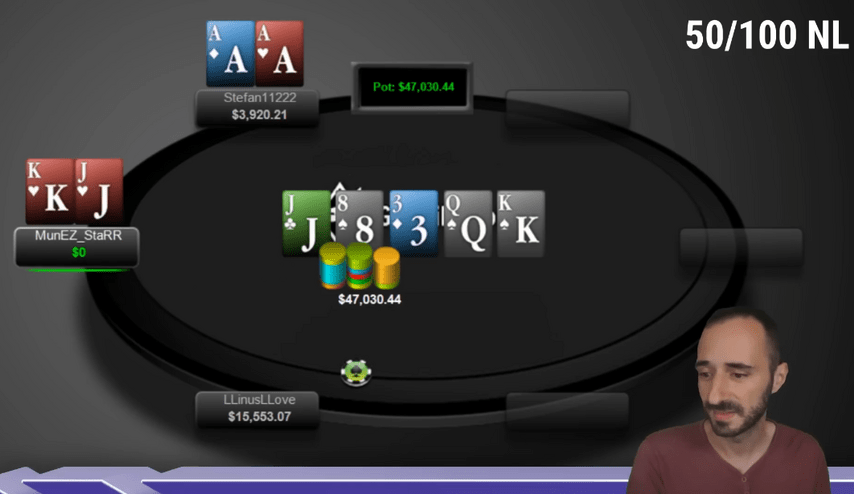
Munez has the expected KJs in his line: a bluff 4-bet, calling a 5-bet odds... Check-calling on the flop – you can sometimes check-raise defensively, but we're behind all of Stefan's value hands. Check-calling the turn vs small bet, we are still beating bluffs and have good pot odds against value. Seems reasonable. Well, on the river he has two pair, he blocks and beats aces that can check the river, so it's intuitive to donk bet. What is the optimal strategy in this spot really, I don't know.
Stefan has aces. Two questions can be asked along his line. First, did he really choose the best sizes on the flop and turn? I do not know the answer, but intuitively they seem logical. Second, do we want to bluff catch on the river? We don't beat any value. Personally, I don't find this spot very pleasant to call with aces. We don’t have relevant blockers – Munez is unlikely to have , and we have no spade. To be honest, it feels like Stefan has one of the worst bluff catchers possible. In general, I don't really like this call, but folding aces is often quite difficult.
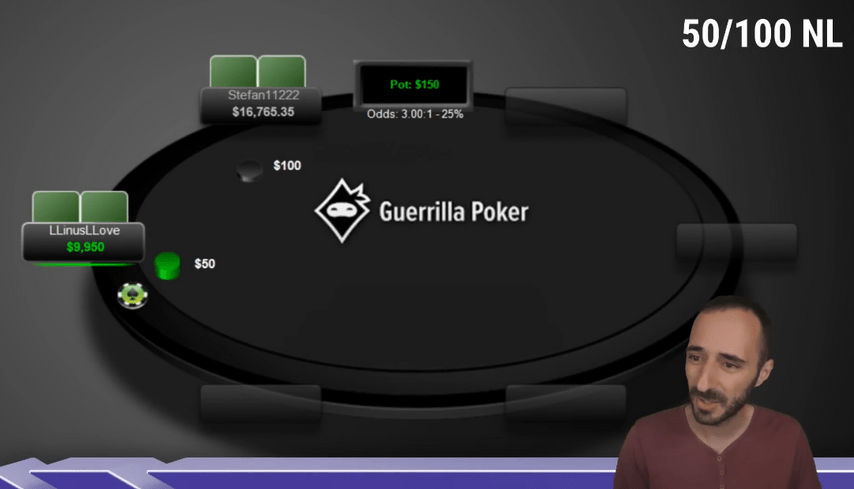
Meanwhile, Stefan and Linus opened another table where they played heads-up. Very interesting and cool!
Linus raises to $245. Stefan defends the BB with a call.
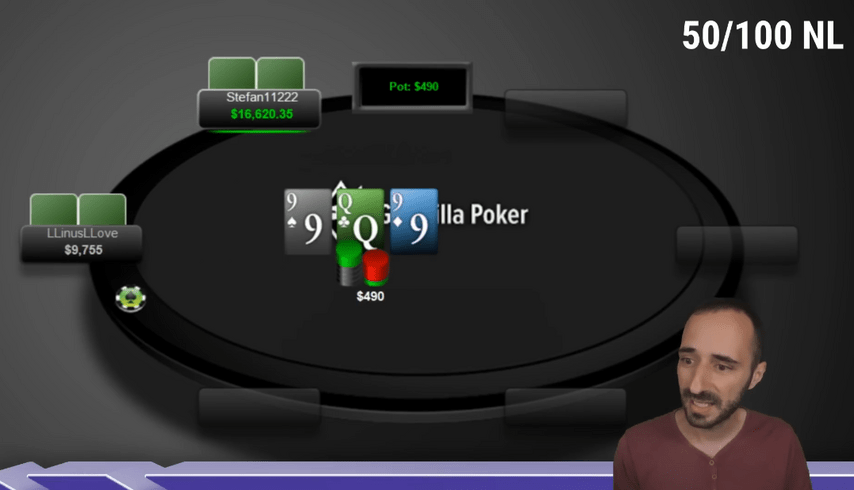
When checked, Linus c-bets about a third of the pot for $151. Stefan calls.
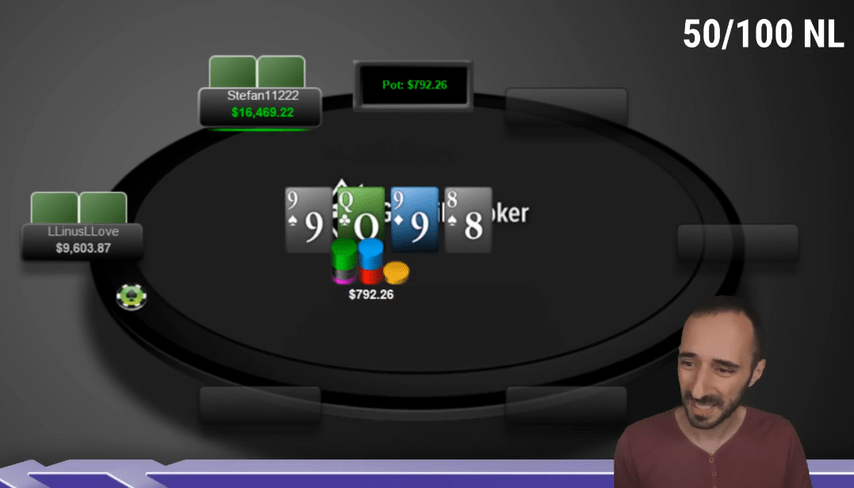
Stefan donk bets a third of the pot for $263. Is it possible to play eight of spades like this? The answer is no, you can't; rather, it is not optimal. However, Stefan quite often performs such illogical actions. Yes, in theory he doesn’t have donk bets – so what are you going to do? Do you know how to deal with such a line? Because if not, donk bet will work just fine.
Linus calls.

Stefan donks third again for $438. Linus raises 5x to $1,999. Stefan 3-bets to $5,484! Linus calls and we have a $12,000 pot.
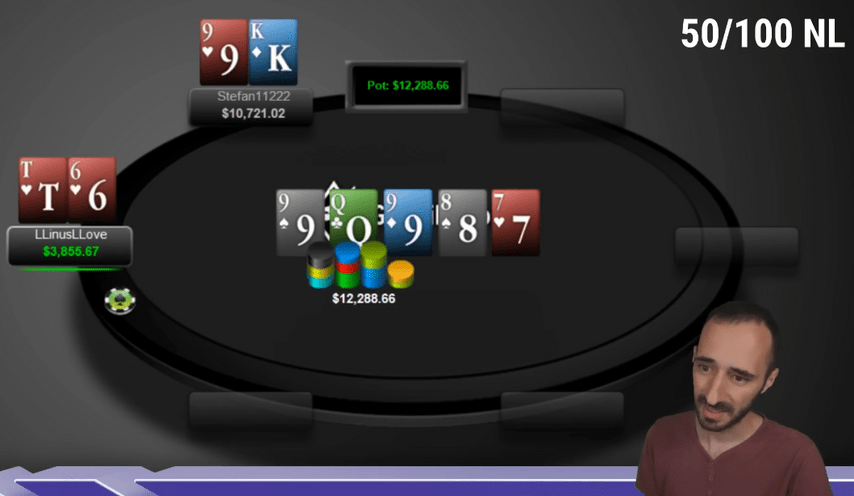
So, with trips, Stefan decided not to check-raise the flop and donk bet twice on later streets instead. 3-betting a river raise looks like very thin value. But Linus has some bad news for him – he improved to a two-way on the turn and made a straight on the river.
There isn't much I can say about this hand. Stefan's line is highly unorthodox, but in this particular case quite logical. Although, given the three possible straights on the river, he may have overplayed his hand a bit. However, it’s hard for me to judge: I wouldn’t be surprised if Stefan studied this line deeper than me, and with his ranges it’s a good game.
Linus has everything very logical – bet the flop, call the turn, raise and call the 3-bet river. Considering the sizing, calling a 3-bet is mandatory. In his place, I would be a little afraid that I am not beating value, but I would not have enough confidence in this to fold. After we see Stefan's hand, calling is automatically good, since Stefan's 3-bet doesn't look like a bluff. Yes, a pretty standard line for Linus, and he's raking in a pretty good pot.
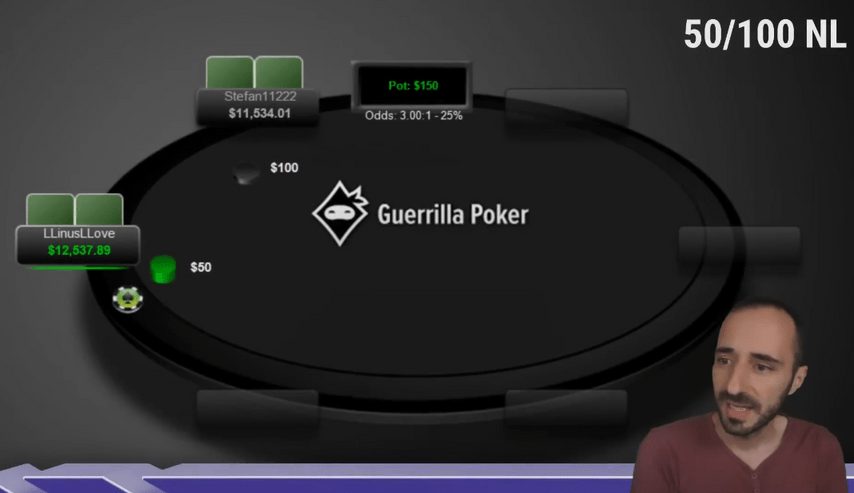
Okay, next hand. Linus raises to $245, Stefan 3-bets to $1,300, about 5x. Linus calls.
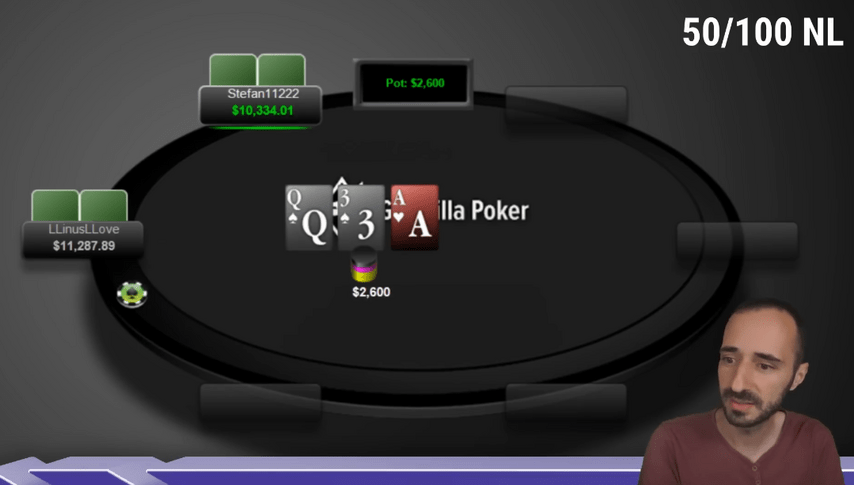
On a two tone flop with an ace, Stefan fires a fairly large continuation bet of $1,948. You don't play like that with the whole range. Stefan wants to use his advantage , , to play these hands for the stack, playing them as sharply as possible. It prevents flush draws, gutshots, and medium pairs from realizing equity. However, to be eligible to play like this, you'll have to make a check range and defend it. A good hand to include in a check range would be a set of aces, for example. I will not describe in detail how the strategy is built in this case – in practice it is quite rare, since it is more difficult to use. However, it can be called Stefan's calling card – it was with the help of this strategy that he began to break into high stakes.
Linus calls.
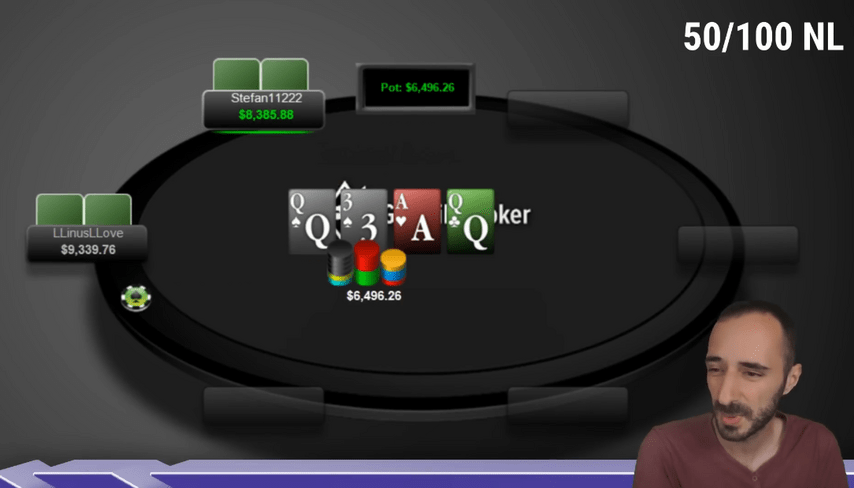
The queen dramatically changes the whole picture. Since Stefan doesn't cbet his whole range, he doesn't have many queens, but Linus has more than enough. So we see Stefan slowing down and checking. Linus checks next.
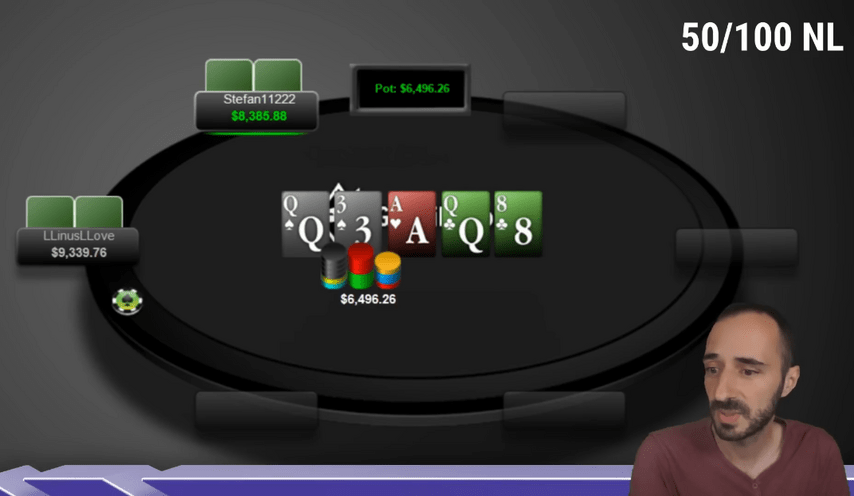
Stefan makes a small bet, $2,142. Linus moves all-in. Stefan calls.
The sizing of Stefan's hand is similar to , but hardly – With I would like to put more. Push Linus – trips or bluff.
Hand outcome:
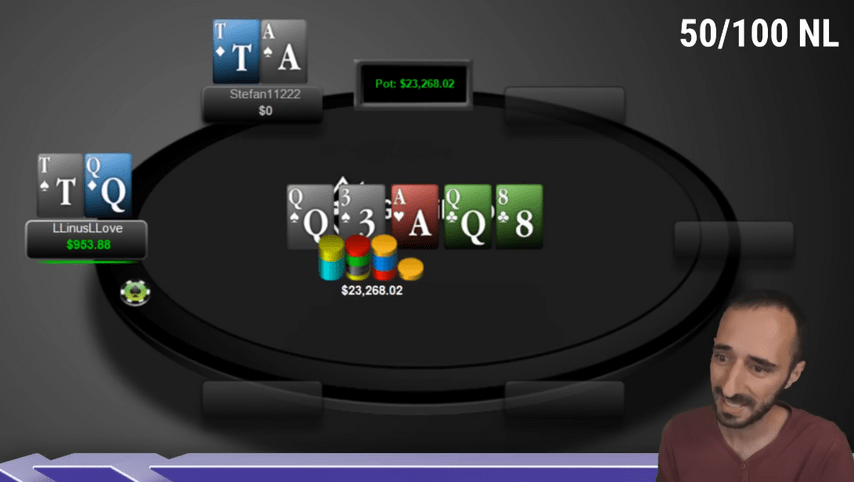
I'm not completely sure Linus should always continue with QTo for this size on the flop, although calling with a backdoor flush draw is probably mandatory. By checking back on the turn, he sets up a trap, which makes sense – we should check these times from time to time, otherwise Stefan will be able to shove all of his aces on the river. That's why Stefan makes a small bet on the river – he understands that Linus is capable of slow playing the turn with trips. Respect the boss!
Linus goes all-in with QTo and Stefan bluffcatches with ATo. Pure bluffcatcher, doesn't beat any value. This is also a tribute to the opponent – Stefan believes that Linus will be able to find enough bluffs here to justify such a call. Many other players would not be able to cope with such a task.
Another hand from the cream of the poker elite! I think that's where we end for today. Subscribe to the channel and see you soon.
